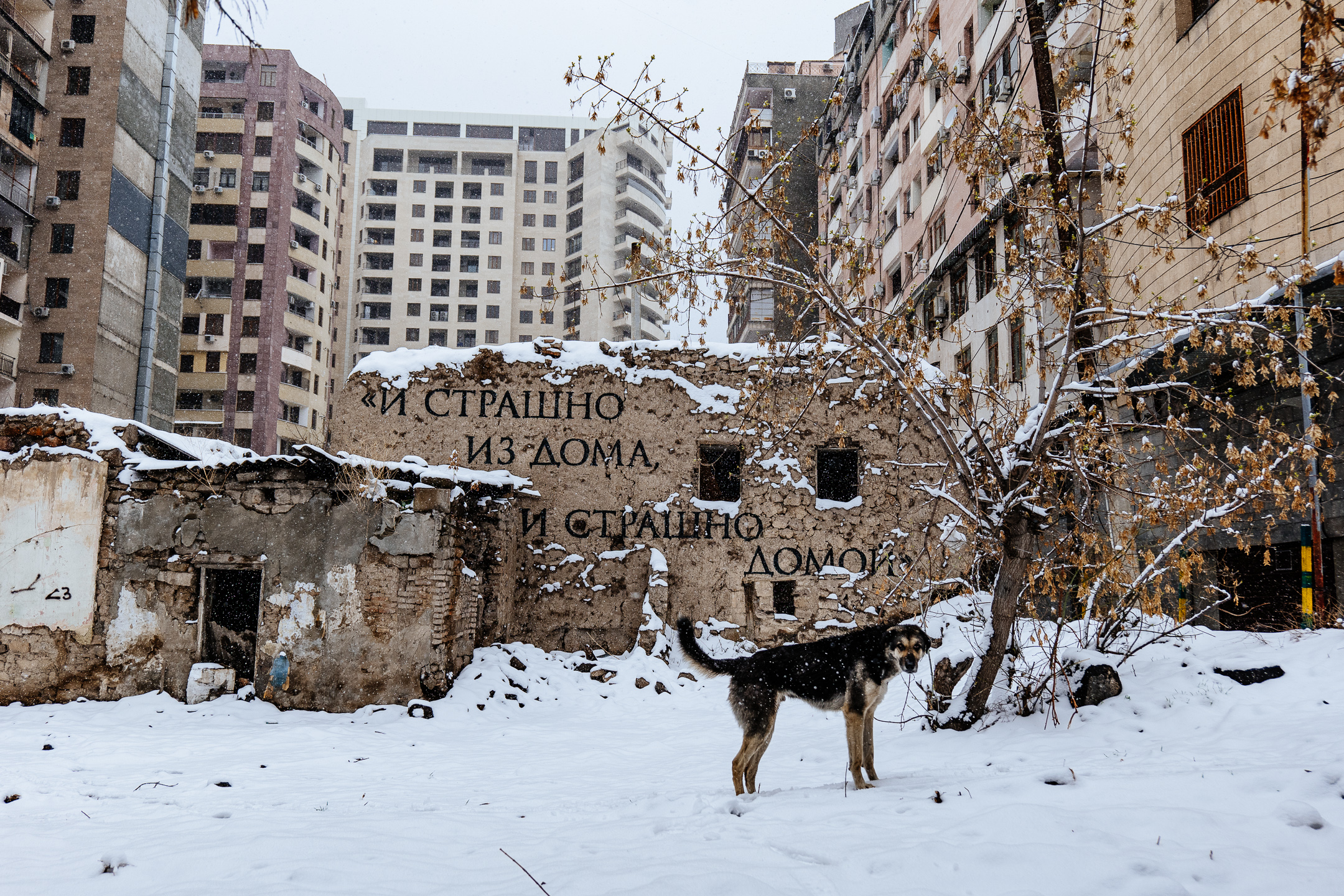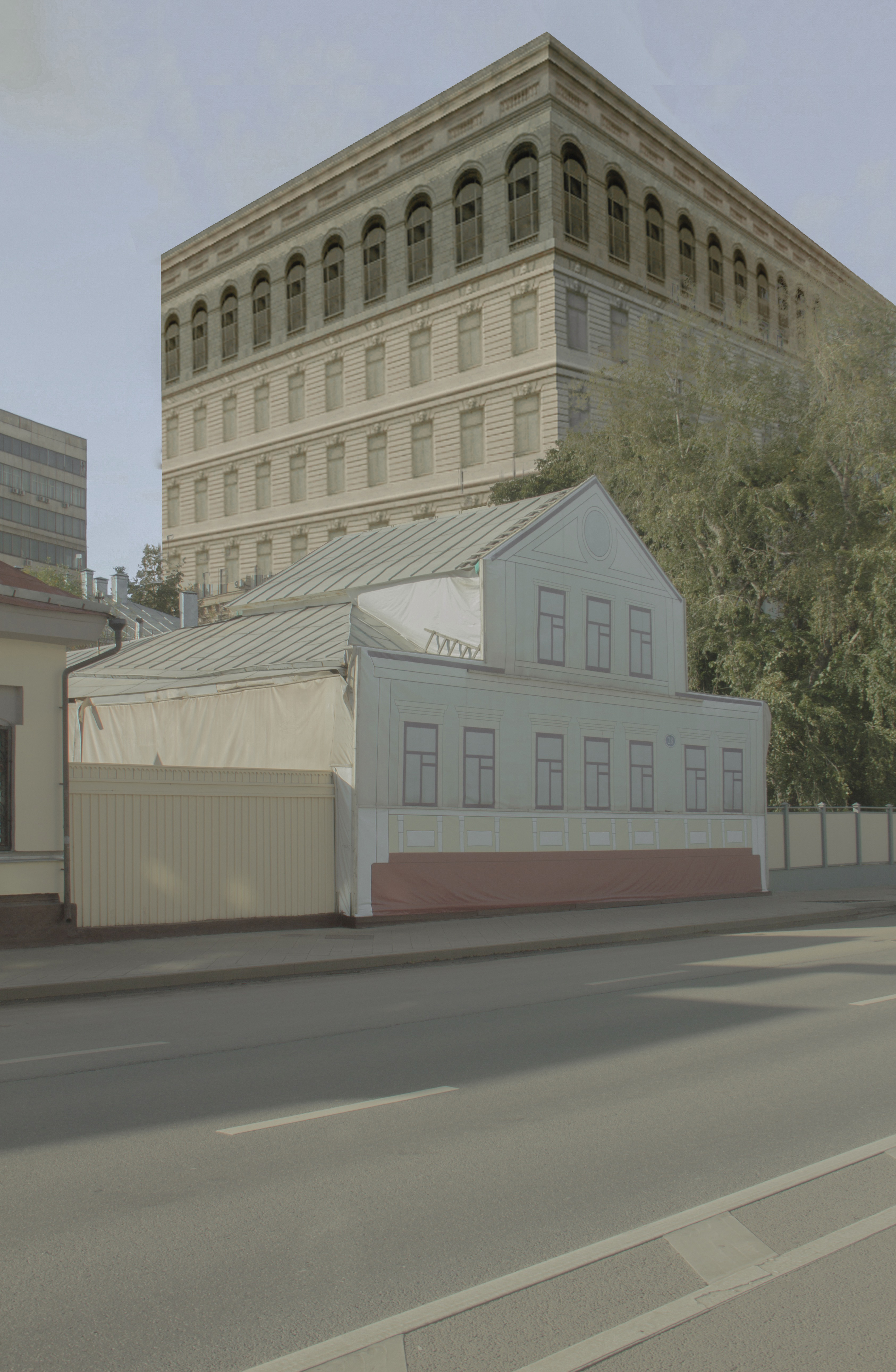“Where is our home? Can you show me?”
I overheard a Russian woman ask her child that as I walked past them not long ago on a street in the Armenian capital Yerevan. The boy started pointing out several buildings and his mom nudged him to the correct one using words like “closer” and “almost”.
The exchange stayed with me as the number of Russians entering Armenia increased this winter and spring. While it seems obvious the woman was trying to find a playful way to help her son learn his new address, her efforts struck me as a mother trying some discreet therapy, helping her child adapt to a new place and identify it as home.
I don't remember if my mom taught me anything about what makes a home or directed me to define it one way or another, but I remember that somehow my feeling of home became largely linked to her once she moved to Moscow during Armenia’s economic crisis in the 1990s.
My mom wasn't the only one who left. A survey of external migration from Armenia from 1991 to 1998 estimated a net total of 760,000-780,000 people left the country during that crisis—nearly 20 percent of the population at the time of independence. Nearly half—40 percent—relocated to Russia.
The process has seemingly reversed since Russia invaded Ukraine in February: an estimated 300,000 Russian citizens and residents left Russia by mid-March 2022 as political refugees and economic migrants. They have few options and around 50,000 have chosen Armenia, a small, monoethnic country where even the smallest changes are visible.
As their presence grows in the capital Yerevan and elsewhere, I find myself remembering the mother and her son, and wondering what it feels like to leave home—especially for Russians and other ethnicities who may not support their government but are measured by it.
It is perhaps not surprising that few Russians cared to speak to me about their move to Armenia or their prospects for the future. A new piece of street art captured the mood of many, however: “и страшно из дома и страшно домой” (Russian, meaning “scared outside of home, scared at home”).

Courtesy of Vladimir Abikh
The graffiti is the work of a Russian contemporary urban and media artist, Vladimir Abikh, 35, who borrowed the line from the poem Planet Haram by Ukrainian poet Alexandr Vavilov.
“During the last month over a thousand people had left Russia from fear and inability to build their plans. In Yerevan, everyone says that Russians brought with them the snow…” Vladimir wrote recently on Instagram.
He was no longer in Armenia when I tried to contact him, but he agreed to answer my questions about what makes a place home from Russia, where he currently lives.
“The idea of home has different dimensions, it's a physical space where you feel safe, a cultural space where you can relate to the language and culture,” he wrote, adding “now home is also virtual accounts on social media.”
These different dimensions of homes, according to Vladimir, are also more fragile, since the loss of any of them can lead to the sense of losing a home,
“Russia`s history, unfortunately, has examples of isolation and deep inner terror. It's still uncertain how the current situation may resolve, maybe the conflict will be for years, maybe the borders will be closed, and repression will start…” he wrote.
He added that different forces drive people to move. “My trip was from not to—that is why I came back. I travel a lot but wherever I go, I always return to Russia because it has a certain sense of home for me.
I found it interesting that during this post-globalization era, where the cities in most countries feel more or less the same, the sense of “home” and attachment can still be valid. Vladimir, however, summed up home as the place “where you don't feel like a stranger.”
Russian photographer and artist Ilya Rodin, 25, whose family name weirdly resembles the Russian word for homeland, “rodina” defines home differently. He arrived in Yerevan three months ago and has no plans to return to his home in Moscow.
“Even if I go back to Moscow right now, basically none of my friends are there. No one will meet me at the airport, plus the photo studio I have worked in also closed. So, I have nothing to do there,” explained Ilya, whom I met in one of the new alternative places opened in Yerevan “TUF,” where many Russian young artists and activists are building a community, creating a “home” in a way.
“Here I started archiving data from around 120 Ukrainian photographers who are currently working there, and I`m constantly bombed with ideas. I don`t do anything radically different here in Armenia, but organizing things is much easier here. Everyone is accessible, our community is not a vertical hierarchical system.”



Courtesy of Ilya Rodin

For Ilya, the most crucial factor that drove him to leave Moscow wasn`t the uncertainty or feeling of insecurity. Rather, it was the idea of remaining with supporters of the government and being forced to fight. “Even if I could skip the mobilization, still theoretically I knew that if I had to kill a Ukrainian, I would kill myself. I know it sounds naive, but this drove me to get out,” he said, noting that the flight to Yerevan was his first trip on a plane.
“I had zero expectations when coming here. I thought all I needed was a roof over my head, and I had no preferences of specific comfort or lifestyle I maintained in Moscow.”
But still, Ilya identifies himself with aspects of Russian culture and philosophy. “There are values I’d die for,” he said, adding, however, that “people living in Russia were different than the Russians here. There is a certain feeling I have never experienced before like we are all standing on the same horizon, not a hierarchical system, but a certain point “zero” and in a way, each of us must start over a lot of things…so we`re open. I know I am open to possibilities,” Ilya said.
Arthur Aghadjanians, 64, was also forced to face point “zero” as a young man, one of the thousands of students abroad who could not return home after the Iranian revolution.
“It was so wildly different to be in the USA, it seemed so diverse and free. I felt great there and didn't feel homesick for the first few months, because there was so much new going around. I was absorbing everything, but then for a moment I started missing [Iran] and when I did, I missed it all: my city, my street, my mom, the way she cooks,” he said.
Arthur hasn`t been back to his homeland Iran for almost 45 years and no longer views it as his home or homeland.
“America also wasn't something I experienced as home, but it was an amazing space and an opportunity to reveal myself,” he said. “I think that people see their experiences in a negative light when they fail in overcoming them. This is when they miss their past and connect it to their homeland or home or street.”
Today, Arthur lives in Armenia, where he is creating a platform for young Armenian artists to showcase their music.
“It may happen that every stage of your life will take place in different countries, villages. It is also possible that you will live in the same place your whole life,” he said. “Either way, you should always…make the most of what you can. Relying on the outside world means you`ll never be at peace because the world changes very fast. To be well, you must create your own luck.”
Diana Serobyan, claims she is 35, has been creating her own luck through a series of international moves. Since her family left Armenia during the 1990s, Diana has lived in Russia, Greece, switching through different professions and activities and eventually opening a cafe in Yerevan, Armenia.
As a teenager in the 1990s, Diana lived through Armenia’s mout ou tsourt tariner (dark and cold years), when bread was rationed to small portions and distributed using special coupons.
“I remember the taste of that bread,” says Diana “It was like a sandpaper. We moved to Moscow when I was fourteen. I adapted easily and Moscow became my city. I love it.”
The cafe, though, isn`t a homage to her teenage years but to a neighborhood, she liked in Brooklyn, New York after which the bakery is named “ Greenpoint”.
Diana has been constantly between Armenia and Russia starting from 2018. It was the year of the Velvet Revolution, which caused huge interest in Armenia by foreigners and repatriates. She though doesn`t see herself as one of them, since her point of identification is neither her Armenian origin nor double citizenship.
“Home is always linked to birthplace or to the idea of patriotism. Motherland, fatherland, is always linked to a birthplace. I mean it`s not about loving, not loving your birthplace, but limiting yourself to it, like you can belong only to that place” she says, adding that doesn`t see any contradiction between feeling Moscow as her capital city, and her grandpa`s house in the Armenian city Gyumri as something she associates with home.
“To me, all is simple, my home is where my experiences are, where my life flows. Life can turn in a way that you`ll have to stay or leave somewhere you think you can grow and enjoy the life the way you want to. But you don`t stop living, you just continue living somewhere else.”
This feature story was prepared with support from the Friedrich-Ebert-Stiftung (FES) South Caucasus Regional Office. All opinions expressed are the author’s alone, and do not necessarily reflect the views of FES or Chai Khana.
DONATE NOW

